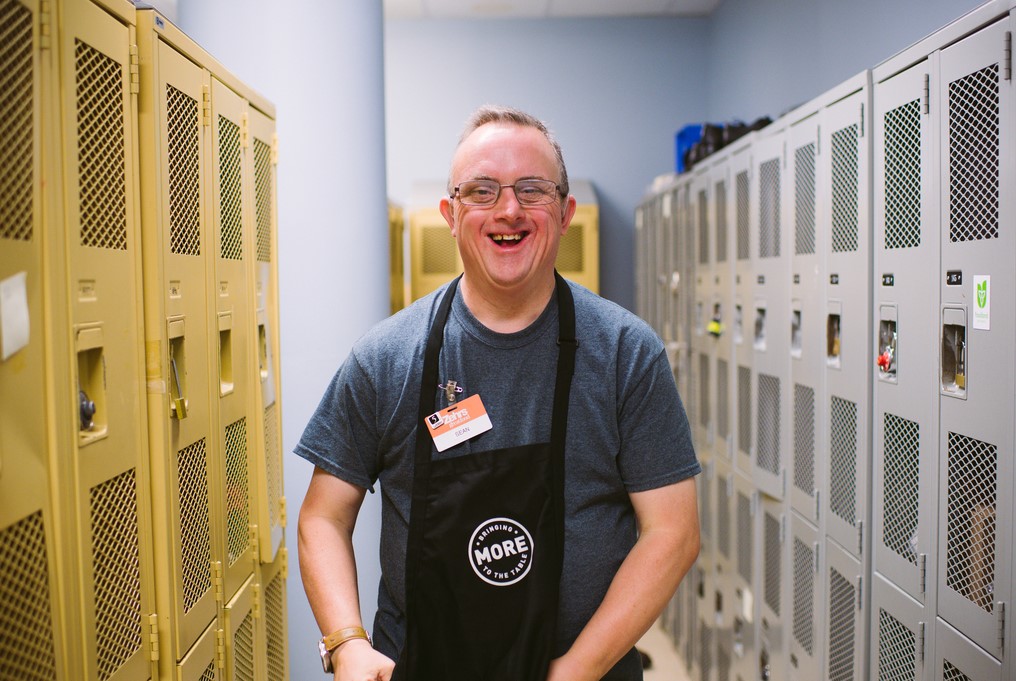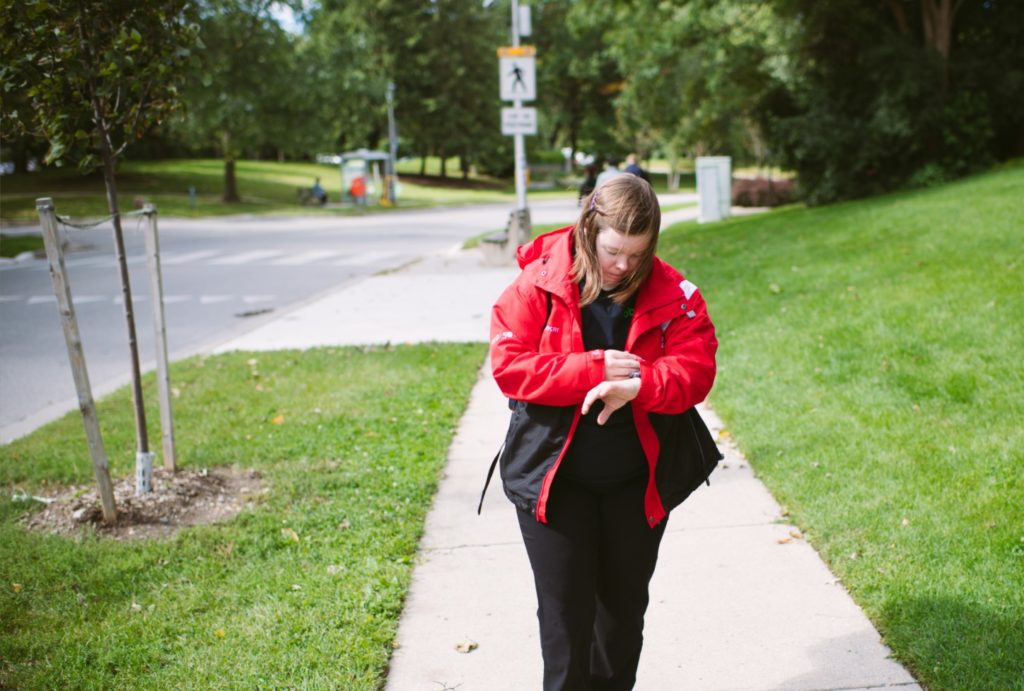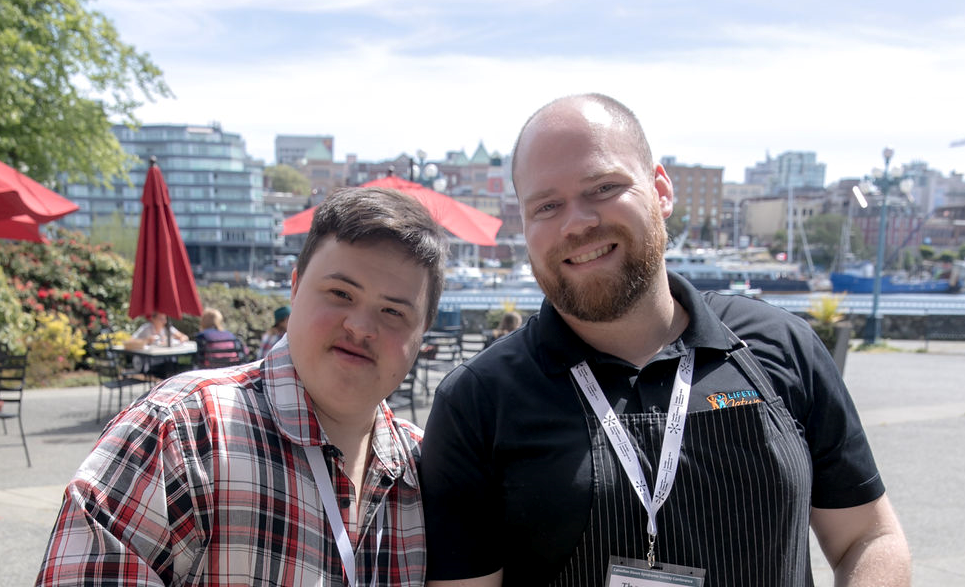Employment Planning Hub
Foundations

Section 1: Developing Foundations
Part A – How Everyday Opportunities Translate into Employable Skills
Different everyday opportunities and experiences can help young people with Down syndrome reflect and build on their skills. Through those experiences, they can learn about themselves, have social interactions, learn about their values, what they are good at and what they don’t like; which can all be important and helpful elements for career exploration.
Here are some examples of everyday opportunities:
- Helping your mom turn over soil, add compost and plant a garden
- Looking after your younger siblings while your parents run errands for an hour
- Mowing the lawn and using a weed-trimmer
- After dinner clean-up including washing dishes and wiping down the kitchen
- Visiting the human rights museum in your cit
- Helping your grandma find baking recipes on her computer
- Welcoming and seating people at your older sister’s wedding
- Taking a first aid course
- Volunteering at a community fundraiser event
Here are some reflection questions to help you think about those everyday opportunities:
- Let’s talk about that experience. Tell me something you learned.
- Did you teach anyone during the experience? Tell me about that.
- What parts of the experience did you enjoy? Why?
- What parts of the experience did you NOT like? Why? Would it have been better if you had more help or more information?
- What do you think is the most important part of doing that task well?
- Here’s what I (or someone else) think you did really well (describe).
- Who else was involved in the experience? What did they do well? What could they have improved?
- Would you like to try something like this again? Why? Tell me about something you would like to try instead.
Assignment
- Review the Career Action Plan and Employability Skills Tracker. Print the forms to write down and edit your information as your go through the Hub.
- Think about a recent work and/or learning opportunity. Go through some or all of the reflection questions. Add some questions of your own if you like.
- If important information is found about your likes, dislikes, values, interests or strengths, enter the information into the Career Action Plan.
- See the Employability Skills Tracker. Are there employability skills that you already have, are working on improving or have no experience with? That’s okay, you can revisit the tracker over time and change your answers as you gain the experience.
These exercises and reflections can be done multiple times over weeks, months or years.
The information may change. Watch for patterns of strengths, values and interests.
Also watch for contradictions or inconsistencies in the information, point them out and discuss them.
There are no right or wrong answers. This ongoing exercise is all about self-learning and self-discovery so that the person can later make informed choices about jobs that match their strengths, values and interests. Those are the jobs that the person will be good at – and will be more likely to maintain.
Part B – Motivations to Work
Motivation can simply be explained as your level of desire or willingness to do something. When it comes to employment, motivation can make all of the difference between success and failure. If you are not ready or willing to work, it is not likely to be a good experience for you or the employer.
Learning more about yourself and the different types of jobs and options available to you, can help build your motivation to work.
The Stage of Change (SOC) Model helps to illustrate the decision-making process of an intentional change, like becoming employed.
Pre-contemplation Stage: the person feels unready to work. The person is not willing or interested in looking for work.
Contemplation Stage: the person has thought about working at some point but has mixed feelings and isn’t sure when they’ll move forward.
Preparation Stage: the person has decided to make a change. The Preparation Stage involves, for example, the person preparing a resume and deciding on the job they want.
Action Stage: the person is looking for work, going to job interviews or is employed.
Maintenance Stage: the person is working hard to keep their job and do well.
Termination: the person no longer needs extra support to keep the job and they see employment and their job role as an important part of their life.
The Stage of Change (SOC)
(Prochaska & DiClemente, 1994)

Sometimes, the person may feel a setback is coming, or may have lost motivation, or may have quit a job and as a result they may ‘cycle’ through the stages again.
This is not unusual for any of us during change.
To identify and achieve goals we need to work through all six stages.
Facilitator Notes: Change in a person’s motivation is usually something that happens slowly and builds over time – rather than something that is quick and big. We can help people move through the initial two Stages of Change by having discussions that help the person reflect on their current situation and explore the positive and negative sides of their situation (unemployment) until they start expressing a desire for change. We can then use the other parts of this guide to help them explore plans for change.
Take a look at these example questions to Explore Stages of Change with Job Seekers
Motivational Interviewing and Supported Employment: Why Use It?
There are no right or wrong answers. This ongoing exercise is all about self-learning and self-discovery so that the person can later make informed choices about jobs that match their strengths, values and interests. Those are the jobs that the person will be good at – and will be more likely to maintain.
Part C – Rights and Responsibilities
Rights
People with disabilities (of any kind) have a right to work. The United Nations Convention on the Rights of Persons with Disabilities (CRPD) discusses this right in Article 27 of the CRPD. Canada has agreed to comply with this convention.Within Canada, federal and provincial legislation protects people from discrimination on the basis of physical or mental disability and demands that employers make reasonable workplace accommodations so that people can find and keep jobs.
-
It is your right to have a workplace that is free from bullying and harassment.
-
It is your right to have at least a 30 minute break during any shift that lasts 5 hours or longer.
-
It is your right to receive (at least) the minimum wage for the province you live in.
-
It is your right to have a regular pay period, pay day and to receive a pay stub that states your rate of pay and any deductions (income tax, CPP, EI).
-
It is your right to be included in workplace safety training – and to refuse work that is unsafe.
-
When people are helping you to explore careers and find employment, you have a right to be heard and to say no to employment that you do not want.
Responsibilities
It is your right to work – but you have some responsibilities too. Many employers have policies and protocols (rules) that all employees have to learn and follow. It is important to ask and learn about these rules when starting a new job.
- Workplace safety is the equal responsibility of all employees and employers. The employee must notify the manager or the manager must let the employees know if there is something unsafe at the workplace. You must also learn and follow the safety rules for your job.
- Bullying and harassment are very serious. All employees and employers have a responsibility to keep the workplace free from bullying and harassment, this includes yelling and being mean or unfair to people in the workplace. We cannot hug or touch people without permission. We – and the people we work with – can say ‘no’ about spending time with each other outside of work.
- Do your best at work and ask questions if you do not understand.
- Show up ready, clean and on time for all of your scheduled work days.
Canadian Human Rights Act and Employment Equity Act



